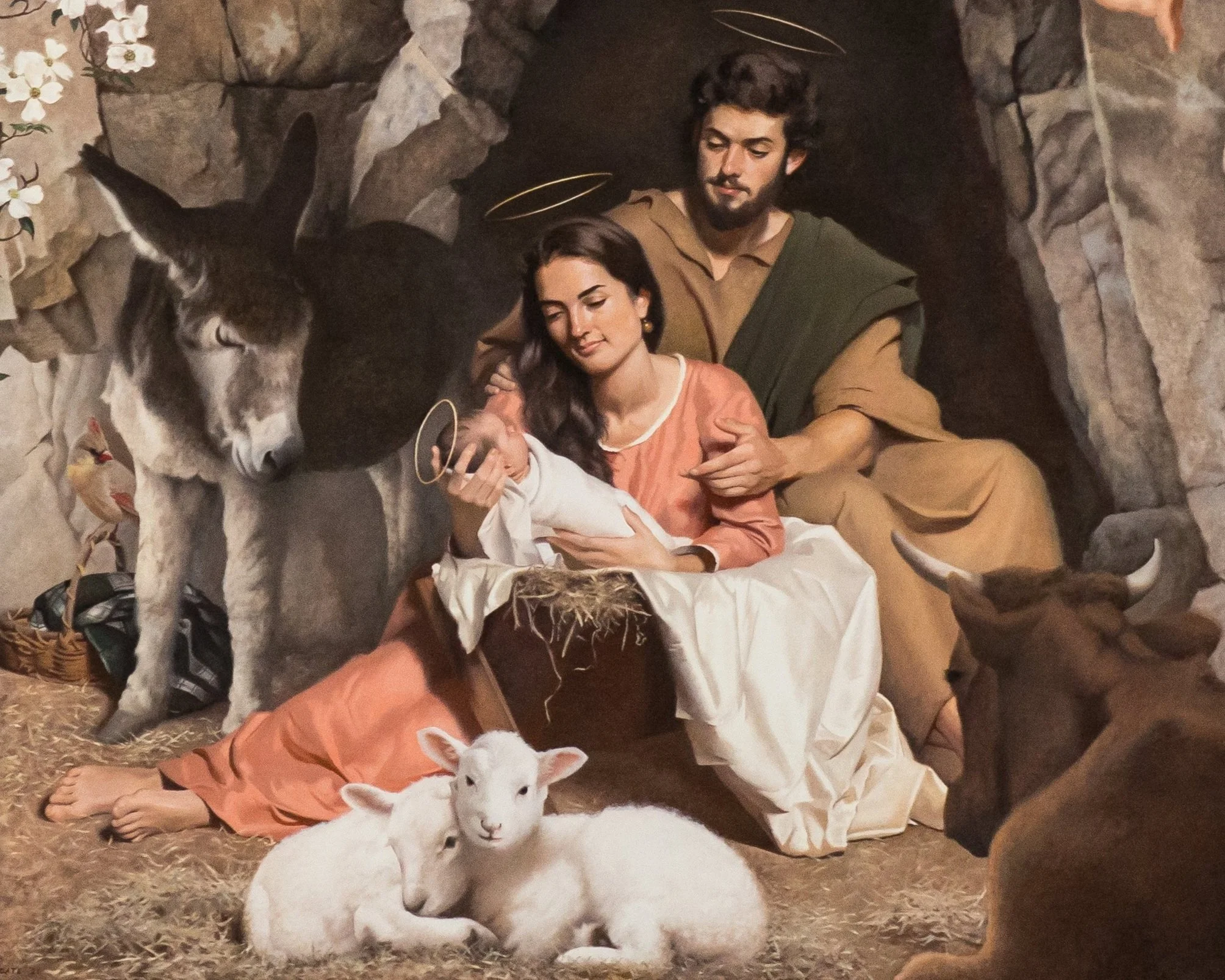Creating a classical academy that is like a choir school, except instead of forming choristers it will focus on sacred art and architecture. What a great idea!
A New Painting of the Nativity by Henry Wingate for Oakcrest School in Virginia
Why Do Scholars Dismiss Accounts of Miracles Performed By Saints as 'Mere Hagiography'?
Here are two images of St Nicholas, whose Feast is December 6th. He was Archbishop of Myra, in Lycia (in modern-day Turkey). He has been venerated throughout the Church and tradition has passed onto us many different stories from his life. For example, because of his help to the poor, he is the saint of pawnbrokers, whose insignia of three golden balls represent three purses of gold he gave secretly to a poor man who could not afford dowries for his three daughters.
Paolo Veneziano, 15th-century Italian
He is known also as one of the Fathers of the Council of Nicea, where, he was temporarily barred from attendance for losing his temper and striking and Arian heretic.
Another story, depicted below, tells how raised three young men from the dead who had been killed by a butcher several years earlier. St Nicholas is a saint of whom more and more was written as devotion to him increased, especially after the 10th century. The story of three boys only appears in later accounts of the life, the most well known being a book called The Golden Legend, which is a series of lives of saints which was compiled in Italy in the 13th-century by Jacobus de Voragine, in which he pulls together the popular accounts of the saints. The relatively late appearance of this story in writing in the historical record means that it will often be dismissed as mere ‘hagiography’ today. This is meant to indicate that is part of a growing mythology surrounding the person and that it is probably not historically true. However, we do not need to accept this argument which rests on an assumption, born of lack of faith, that accounts of miracles should be viewed with skepticism; and that word of mouth and oral tradition are not reliable mechanisms for the preservation of truth.
The fact that this particular story only appears in writing relatively late doesn’t mean automatically that this story was an invention of the writer, which is what seems to be assumed. It is possible, alternatively, that it did happen and was preserved faithfully by oral tradition up until this point.
While we must acknowledge the possibility that details can be added in the repeated telling of a story, without evidence that the author of the book composed the story, it is as reasonable to assume that it is true, it seems to me. The question that I ask myself first is, does this narrative portray a picture of a saint that is consistent with our beliefs as Catholics and about what is generally known of him as a person, and which can reasonably inspire us to greater virtue? The answer to this question, in this case, is for me unequivocally yes. As one who believes that through faith miracles happen today, I do not wonder that they happened in the past too. Given this, I see no reason to doubt the truth of the story.
A south Nederlandish carving in wood dating from about 1500AD.
An Auction in Holland Highlights Problems - the Sale of Holy Relics
Book Recommendation: A Journey with Jonah, Part Three - Art and Literature Through Centuries
Book Recommendation: A Journey With Jonah, Part 3 - The Themes of Jonah in Non-Catholic Cultures
Book Recommendation - Commentaries on the Book of Jonah by Joseph Ratzinger and Fr Paul Murray OP
Philadelphia Art Museum - Site of the Iconic Rocky Steps and of a House for Beautiful Art
The iconic scene is a metaphor for the narrative of an against-the-odds climb out of poverty to success, that not only applies to Rocky, but in many ways to Stallone himself. The imagery would not have worked if the site of the summit had not been grand, beautiful and in many ways a symbol of the idealized city.













